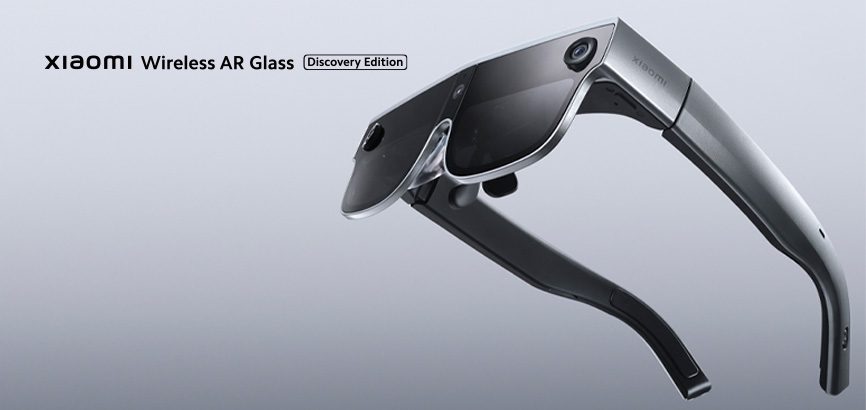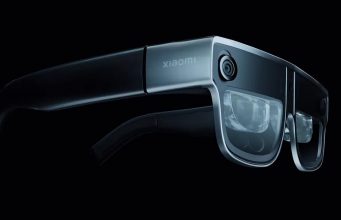Xiaomi Unveils Wireless AR Glasses Prototype, Powered by Same Chipset as Meta Quest Pro
Chinese tech giant Xiaomi today showed off a prototype AR headset at Mobile World Congress (MWC) that wirelessly connects to the user’s smartphone, making for what the company calls its “first wireless AR glasses to utilize distributed computing.”
Called Xiaomi Wireless AR Glass Discovery Edition, the device is built upon the same Qualcomm Snapdragon XR2 Gen 1 chipset as Meta’s recently released Quest Pro VR standalone.
While specs are still thin on the ground, the company did offer some info on headline features. For now, Xiaomi is couching it as a “concept technology achievement,” so it may be a while until we see a full spec sheet.
Packing two microOLED displays, the company is boasting “retina-level” resolution, saying its AR glasses pack in 58 pixels per degree (PPD). For reference, Meta Quest Pro has a PPD of 22, while enterprise headset Varjo XR-3 cites a PPD of 70.
The company hasn’t announced the headset’s field of view (FOV), however it says its free-form light-guiding prisms “minimizes light loss and produces clear and bright images with a to-eye brightness of up to 1200nit.”
Electrochromic lenses are also said to adapt the final image to different lighting conditions, even including a full ‘blackout mode’ that ostensibly allows it to work as a VR headset as well.

As for input, Xiaomi Wireless AR Glass includes onboard hand-tracking in addition to smartphone-based touch controls. Xiaomi says its optical hand-tracking is designed to let users to do things like select and open apps, swipe through pages, and exit apps.
As a prototype, there’s no pricing or availability on the table, however Xiaomi says the lightweight glasses (at 126g) will be available in a titanium-colored design with support for three sizes of nosepieces. An attachable glasses clip will also be available for near-sighted users.
In an exclusive hands-on, XDA Developers surmised it felt near production-ready, however one of the issues noted during a seemingly bump-free demo was battery life; the headset had to be charged in the middle of the 30-minute demo. Xiaomi apparently is incorporating a self-developed silicon-oxygen anode battery that is supposedly smaller than a typical lithium-ion battery. While there’s an onboard Snapdragon XR 2 Gen 1 chipset, XDA Developers also notes it doesn’t offer any storage, making a compatible smartphone requisite to playing AR content.
This isn’t the company’s first stab at XR tech; last summer Xiaomi showed off a pair of consumer smartglasses, called Mijia Glasses Camera, that featured a single heads-up display. Xiaomi’s Wireless AR Glass is however much closer in function to the concept it teased in late 2021, albeit with chunkier free-form light-guiding prisms than the more advanced-looking waveguides teased two years ago.
Xiaomi is actively working closely with chipmaker Qualcomm to ensure compatibility with Snapdragon Spaces-ready smartphones, which include Xiaomi 13 and OnePlus 11 5G. Possible other future contributions from Lenovo and Motorola, which have also announced their intentions to support Snapdragon Spaces.
Qualcomm announced Snapdragon Spaces in late 2021, a software tool kit which focuses on performance and low power devices which allows developers to create head-worn AR experiences from the ground-up, or add head-worn AR to existing smartphone apps.
Xiaomi Unveils Wireless AR Glasses Prototype, Powered by Same Chipset as Meta Quest Pro Read More »
